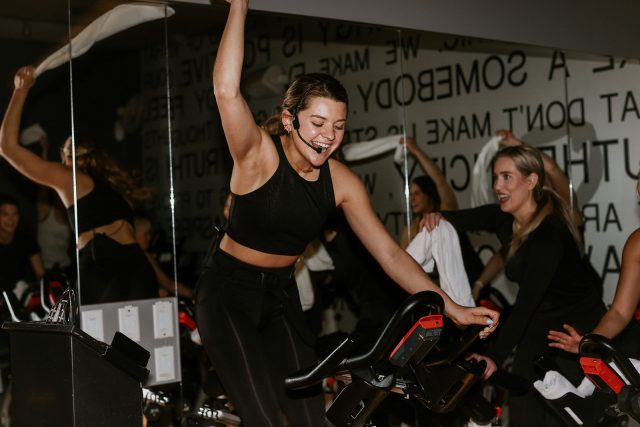Why is HIIT so good for you?
- By Dr. Jenni Bruning Brown
- June 23, 2017
These days, we hear a lot about high intensity interval training (HIIT). Not only are HIIT workouts some of the most effective, but science has shown they’re no passing fad.
In fact, HIIT has been used for years by professional athletes, coaches & trainers who have known of its positive results. But HIIT workouts aren’t just for the professionals. HIIT has shown up in fitness studios (it’s been part of our class offering since we opened) and is becoming more prevalent as people learn of the benefits.
Dr. Jenni Bruning Brown, owner of Fly, answers some of your most asked questions about HIIT.
- What makes HIIT more effective than other workouts?
Meta-analyses (research looking at many studies at one time) has shown that HIIT workouts are one of the best activities you can do for improved cardiovascular health, diabetes prevention, calorie burn & metabolic improvements. In fact, short HIIT workouts are significantly more effective for cardio health than long (read: boring) moderate-intensity workouts. Sorry gym rats, if you love spending 3 or 4 hours at the gym, HIIT isn’t for you.
- What other reasons is HIIT so effective?
HIIT is effective because you get a full-body workout in a short amount of time. HIIT training is designed to give you both strength & cardio training in 45 minutes or less. The resulting metabolism boost makes it a great option for building lean muscle. You can gain strength, burn fat longer & notice visible changes much faster by adding HIIT classes to your workout routine. Your body burns calories for up to 48 hours after a HIIT session, commonly called the afterburn or EPOC.
- What exactly is the afterburn?
The scientific name for the afterburn, EPOC, stands for excess post-exercise oxygen consumption. It’s actually the additional calorie burning that occurs after HIIT workout due to the intensity of the workouts. EPOC is what happens when your body uses more oxygen than normal to repair cells and muscle tissues. Your body goes through a process of rebuilding tiny muscle tears (on a cellular level) and that burns the extra calories. Research that’s compared long, moderate workouts with short burst workouts, shows that HIIT workouts burn up to 40% more calories in the 24 hours post-workout.
- How long does a HIIT workout need to be?
Research indicates that they can be short, but need to be intense. I recommend anywhere from 20 to 45 minutes. If you try to go longer, you may sacrifice intensity. Use your time effectively, include strength exercises & absolutely include intense cardio. In order for HIIT to be successful, you have to get uncomfortable. That’s the key to knowing if you are putting in the intensity. A great example of a mini-HIIT workout would include:
- 1 minute of super speedy high knees
- 1 minute of jump squats
- 1 minute of squats with dumbells
- 1 minute of pushups
- No rest breaks & repeat 3-4 times
A HIIT class is an excellent workout, it’s a scientific fact. So lace up your shoes and get ready for the afterburn at one of our daily flyfire or flyhigh HIIT classes.










